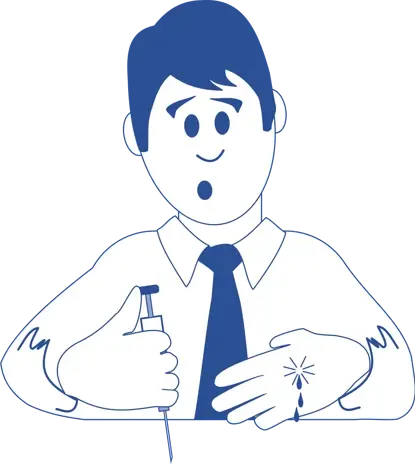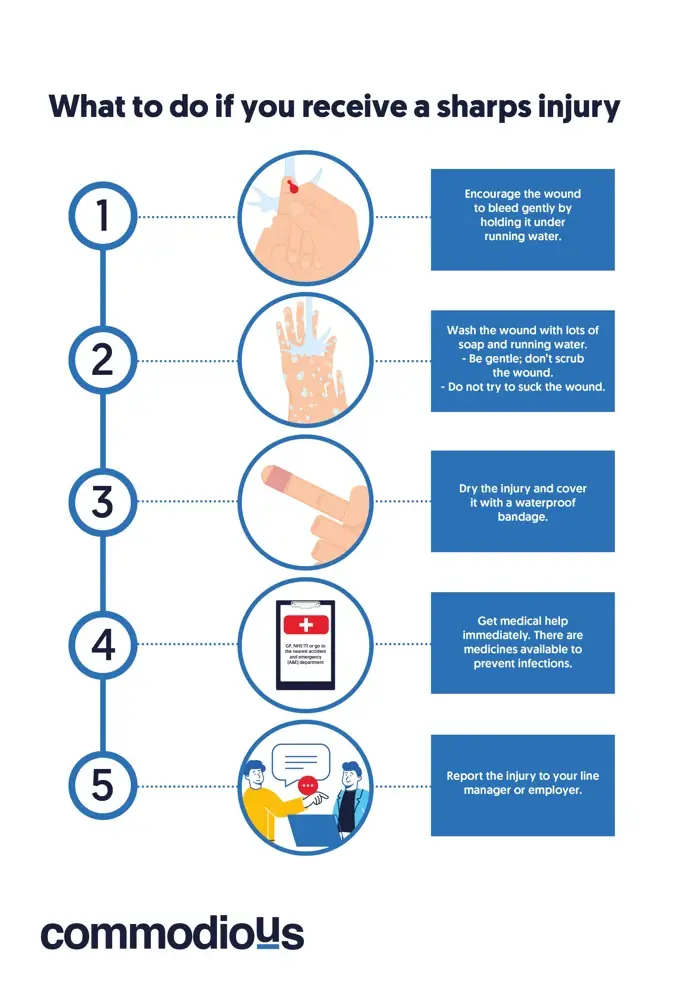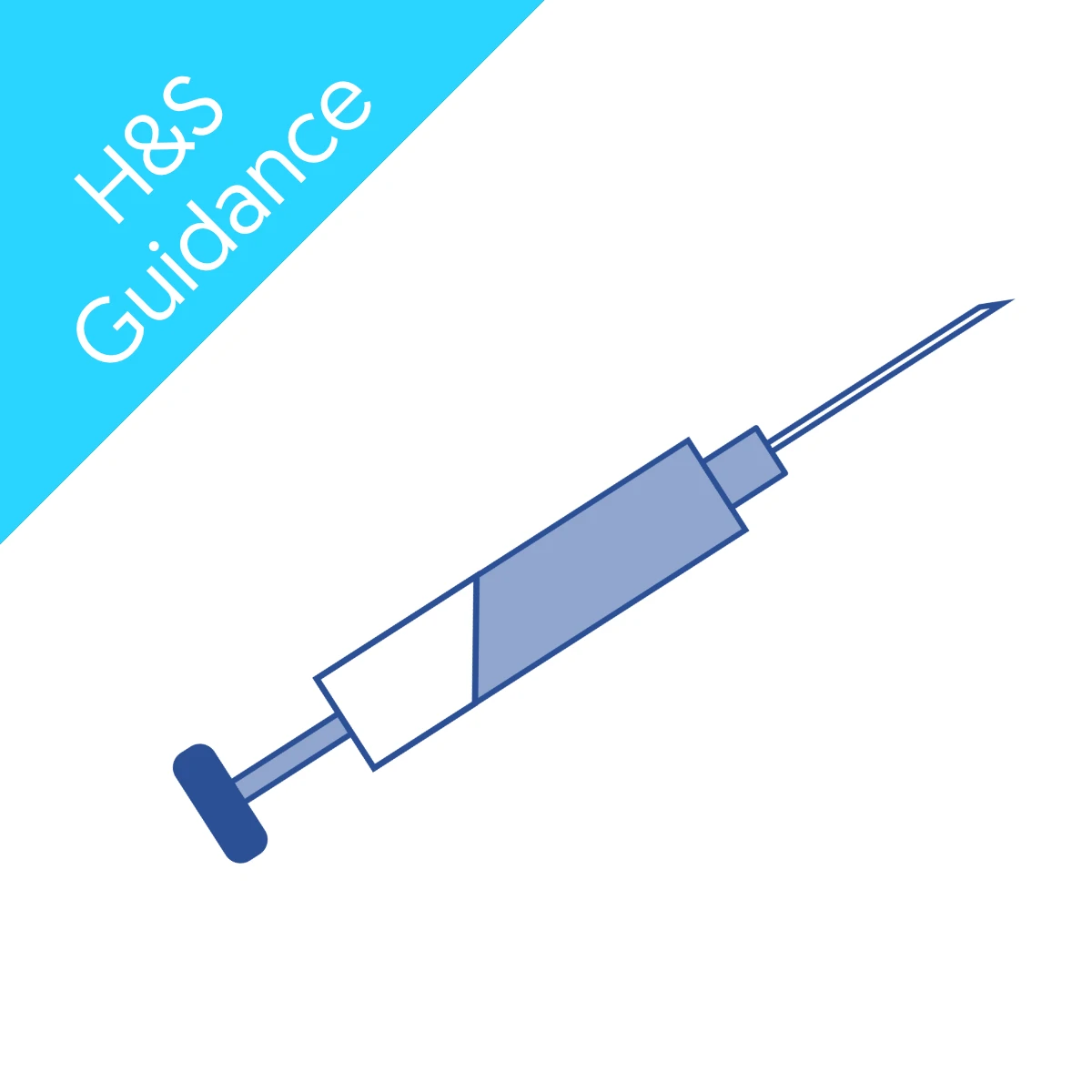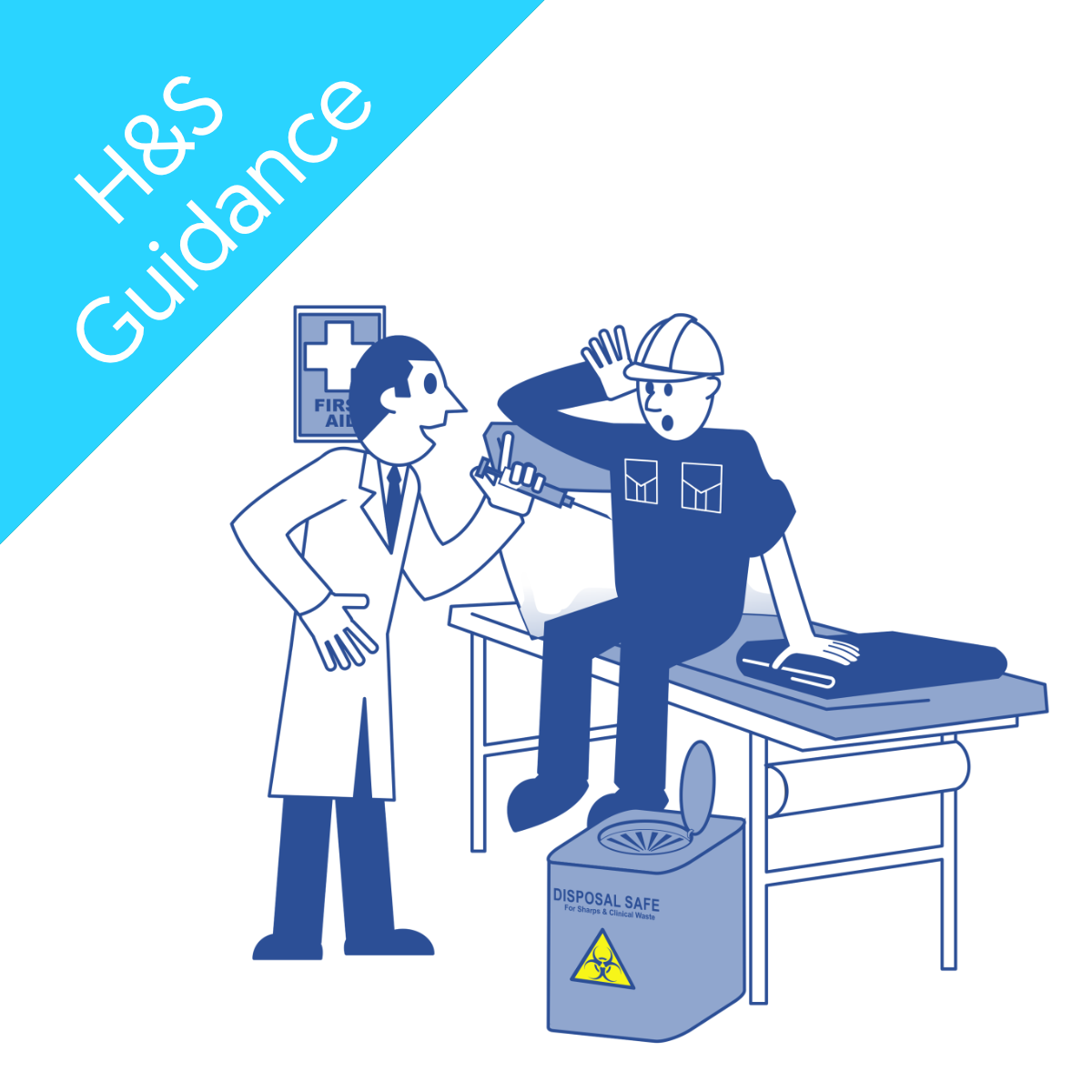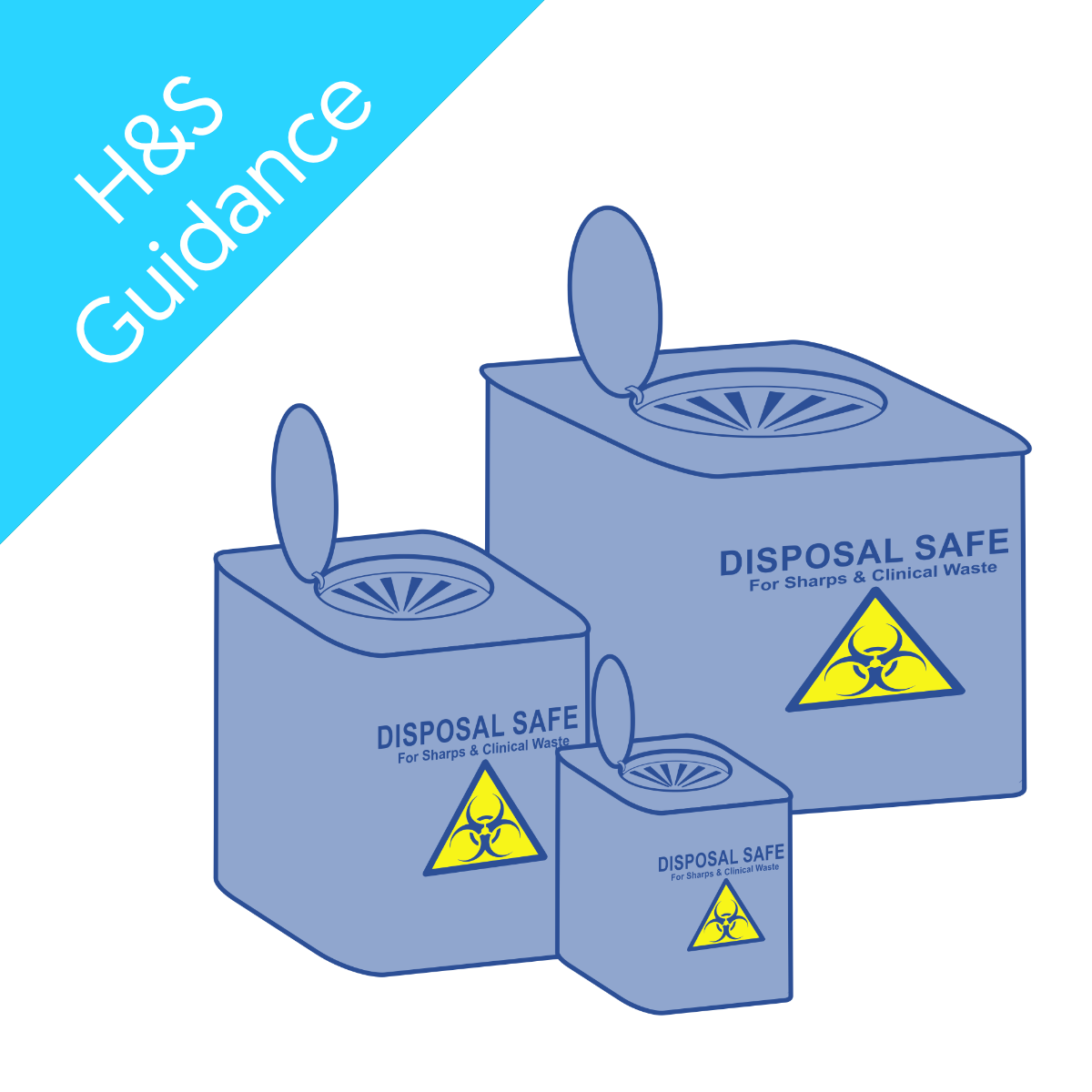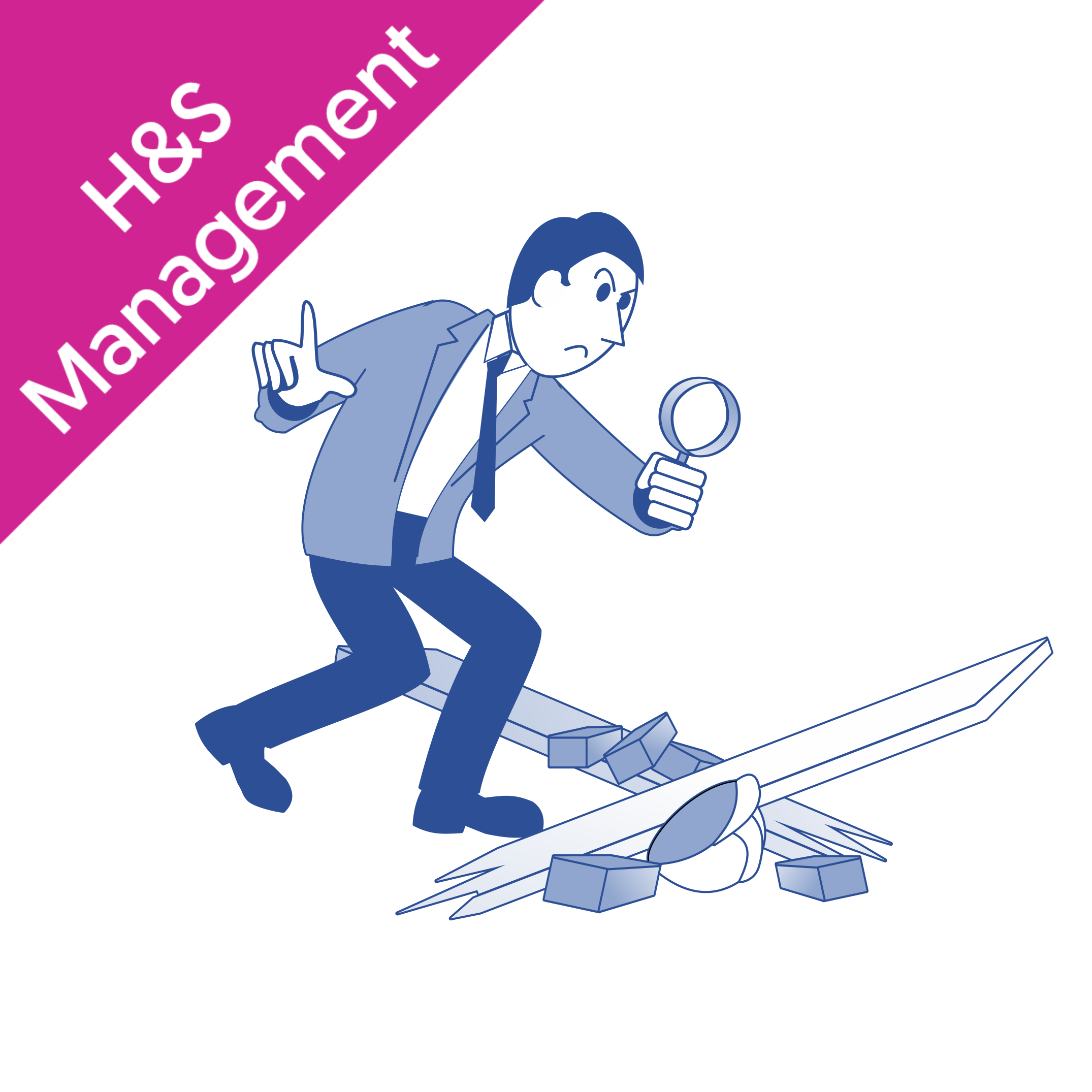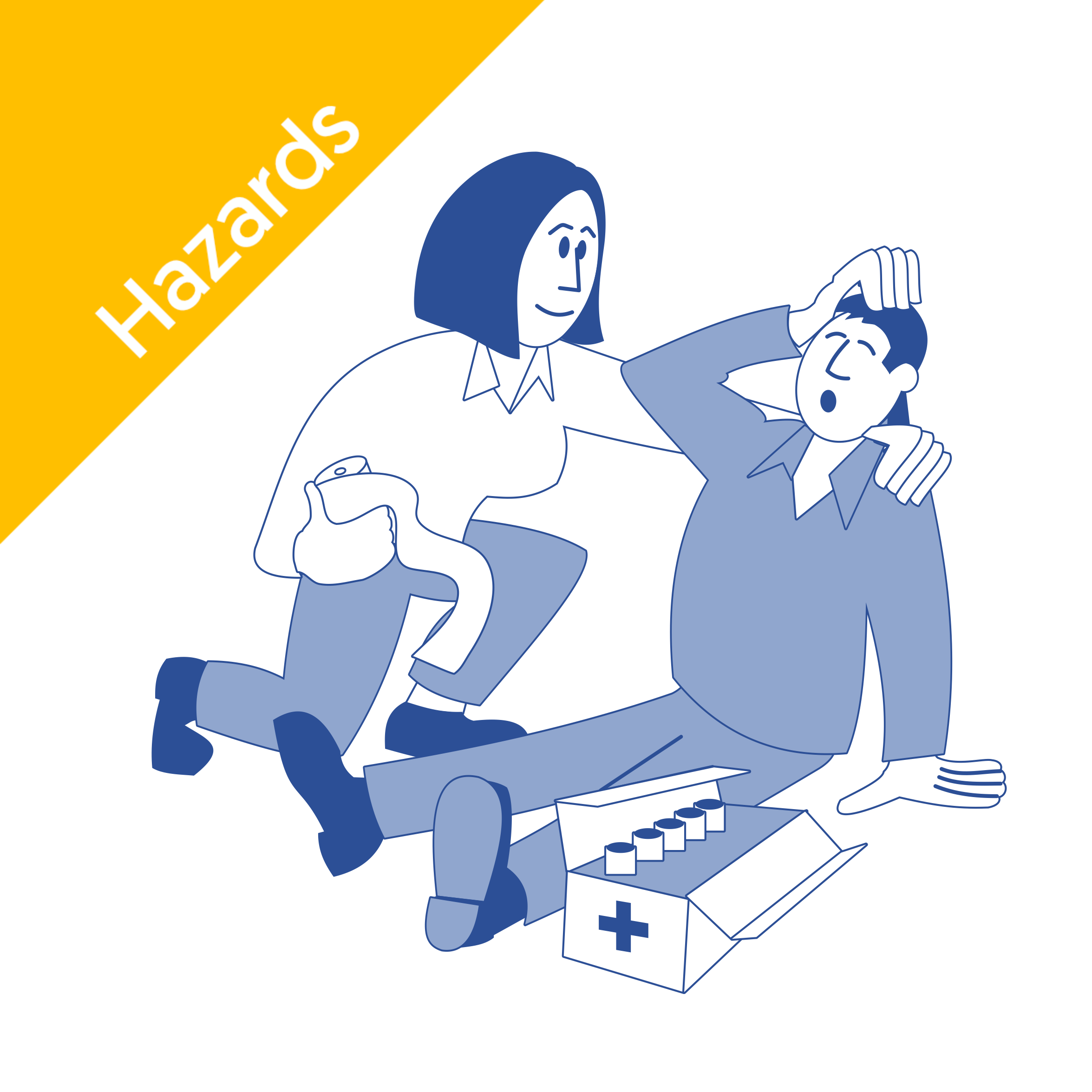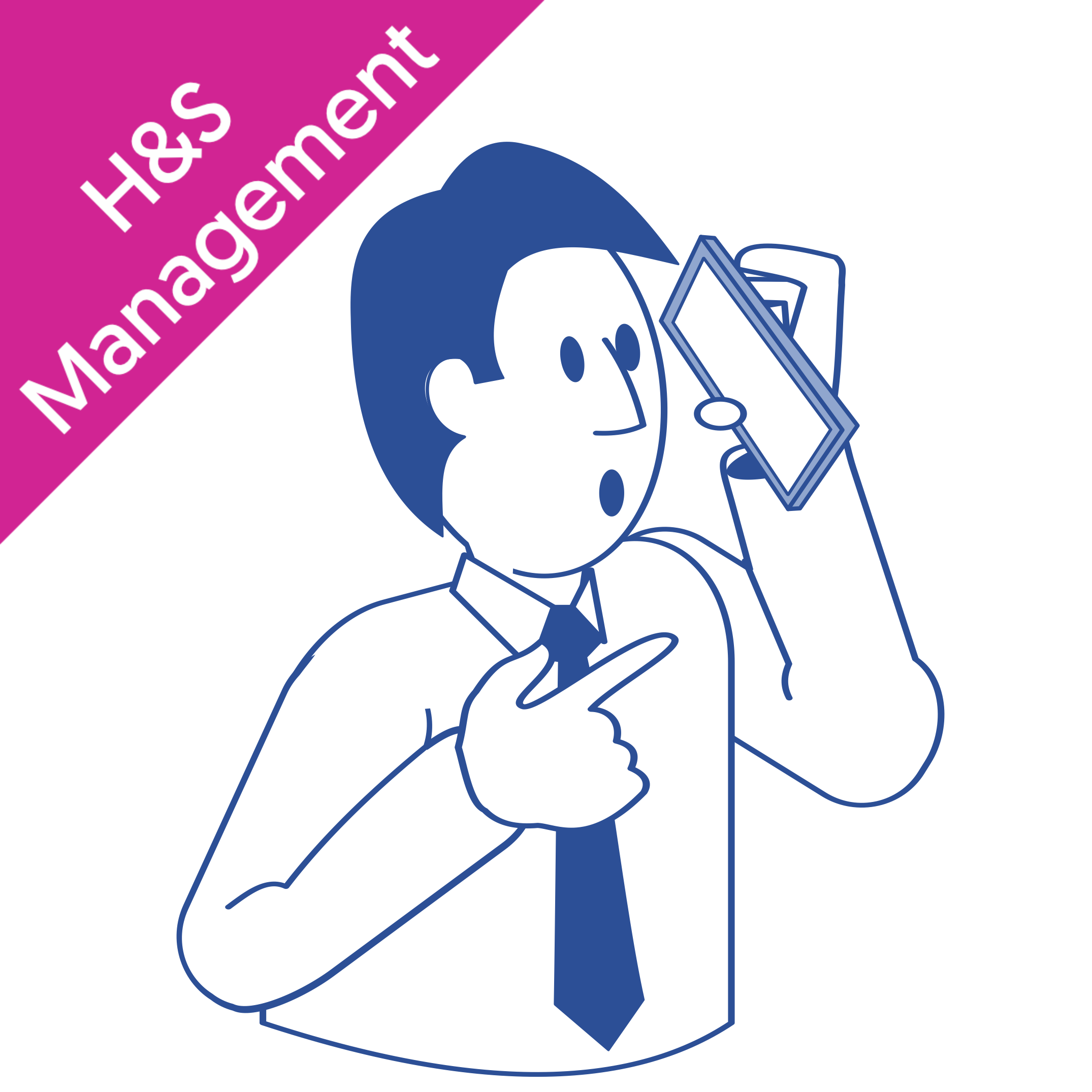What are sharps?
Sharps are items with sharp edges or points that can cause injury or transmit infectious diseases. In healthcare settings, sharps include medical instruments like:
- Needles
- Syringes
- Lancets
- Scalpels
Sharps are primarily used in health care procedures like administering injections. Sharps exist in other industries, like laboratories, research, tattooing and body piercing.
Sharps must be stored, handled, and disposed of correctly to avoid injuries and infections.
What is a sharps injury and how does it happen?
A sharps injury refers to any puncture wound or cut caused by a sharp object, such as needles, scalpels, or razors. It commonly occurs in healthcare settings when handling medical instruments or disposing of used needles without proper precautions.
Mismanagement of sharps can cause a ‘needlestick’ injury. A needlestick injury involves the skin barrier being broken by the sharp. The damage may cause pain and bleeding. Injury from a used needle also carries the risk of transmitting a bloodborne virus (BBV). Bloodborne diseases can be serious, such as Hepatitis B and C and HIV.
Where are sharps injuries likely to occur?
Sharps injuries are the most likely to occur in medical settings like patient wards, operating rooms and recovery areas. Common scenarios include when healthcare professionals inject a patient, draw blood, or close a wound with stitches. Injuries can occur when the healthcare worker is setting up, during the procedure, or when disposing of the sharp.
The likelihood of sharps injuries increases because of unsafe working practices and high-pressure environments. Some common reasons include passing sharp objects between healthcare workers, transporting sharps to other locations, recapping needles, or cleaning used sharps.
What are the health risks with sharps injuries?
Sharps injuries are not just painful. The greatest danger of a sharps injury is the possibility of contracting diseases such as blood-borne viruses. This situation can happen if the injury is caused by a sharp contaminated with blood or body fluid from a patient. The most concerning bloodborne diseases are Hepatitis B virus (HBV), Hepatitis C virus (HCV), and human immunodeficiency virus (HIV).
Many injuries occur, but only a tiny percentage result in infections that cause serious illness. However, the symptoms of the damage and the concern that comes with it. The adverse side effects of treatments, like post-exposure prophylaxis, can have a significant personal impact on an injured employee.
Preventing sharps injuries
To prevent sharps injuries, encourage a culture of prioritising safe sharps management.
This includes:
- Conducting risk assessments
- Controlling exposure
- Providing safe equipment
- Offering sharps with safety devices if possible
- proper disposal of sharps in a specialised bin
- Requiring appropriate PPE
- Organising sufficient sharps training
To read more about the prevention of sharps injuries in a medical setting, read our articles: Understanding the Risks: Why Sharps Safety is Crucial in Healthcare Settings.
Safe sharps waste disposal
Most sharps injuries happen when they are being moved or disposed of incorrectly. Always follow procedures for disposing of sharps waste, including using sharps bins.
Here are some points to remember:
- Suitable containers: Ensure proper arrangements and procedures for safely removing clinical waste, including sharps.
- Point of use dispose: Dispose of sharps carefully right where you use them. This means having portable sharps bins designed to make it easy and safe to discard needles and sharp instruments where you need them.
- Container design: Ideally, sharps bins should prevent overfilling and accidental spills. They should be easy to temporarily and permanently close without the risk of puncturing the sharps bin.
- Control access: Don't leave sharps bins unattended in areas where non-healthcare workers can get to them.
See our Safe Sharps Disposal at Home and Work article in our Knowledge Bank to learn more.
What to do if you receive a sharps injury

